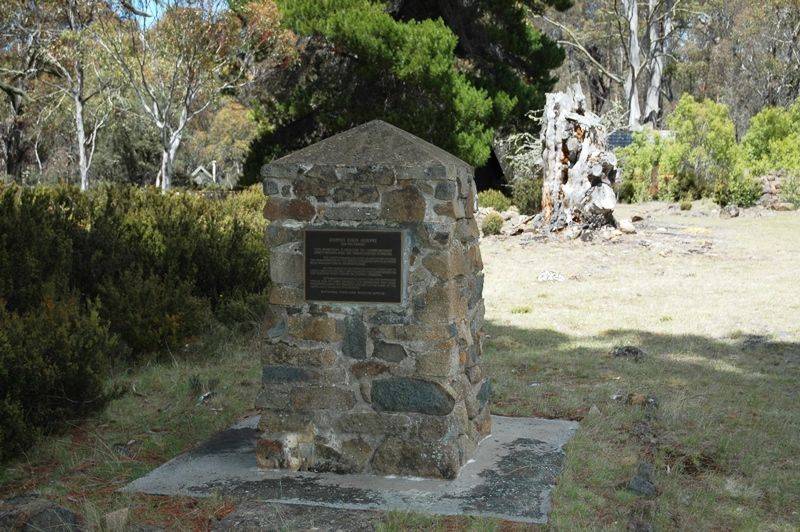
Home » Themes » People » Settlement
James Wilson & FamilyPrint Page 
The monument commemorates James Wilson and his family who were pioneers of Steppes.
It was around 1863 that farmers began the practice of grazing their flocks and herds in the highlands (to rest the lowland fields through the heat of the summer). With the sheep came bushrangers stealing the sheep, so there was a need to station police in the area. James Wilson became the Superintendent of Police for the region and moved into the new little cottage that was built as a police residence and station. From 1863 to 1975, there was always a Wilson living at The Steppes.
For his part, James did not limit himself to police work. He has been credited for working to eradicate sheep scab in the flocks of neighbouring farmers. He was also responsible for putting the first trout in the Great Lake, he and his deputies carrying them over 38km in billy cans, on horseback. It was a point of pride that all of the fish survived the journey.
Before the creation of a mail service to the area, James would bring the post up from the lower Shannon river. When the postal service began, it was his wife, Jessie Wilson, who worked as postmistress, a responsibility that she passed on to her youngest daughter, Madge
Location
| Address: | Highland Lakes Road, Steppes State Reserve, Steppes Homestead, Steppes, 7030 |
|---|---|
| State: | TAS |
| Area: | AUS |
| GPS Coordinates: | Lat: -42.101863 Long: 146.894178 Note: GPS Coordinates are approximate. |
Details
| Monument Type: | Monument |
|---|---|
| Monument Theme: | People |
| Sub-Theme: | Settlement |
Dedication
Steppes State Reserve
(48 hectares)
This memorial is erected to commemorate James Wilson and his family, Steppes pioneers.
The Steppes Homestead, built in March 1863, became the headquarters of the South Longford Police Division with James Wilson as Superintendent.
In the year 1870 he liberated Brown Trout Fry in Great Lake for the first time, so laying the foundation for the valuable trout fishery in Central Tasmania.
Miss Madge Wilson, who conducted the Steppes Post Office for 30 years, donated the homestead and some additional land. She devoted her life to the care of the fauna and flora of this reserve.
National Parks and Wildlife Service






